THE EXCELSIOR PRESS MUSEUM PRINT SHOP AND
RESTORATION FACILITY

Dressing Notes for the 1850
Newspaper Printing Office
with historical accuracy
~~~~~~~~~~
CLICK ANY PHOTO FOR CLOSE-UP VERSION
Printing Press(s) ~
Stone Table ~ Proof Press ~ Bindery Cart ~ Type Cabinet ~ Suggested Layout ~
Other Items
*note all items are functional and usable
for printing and are period accurate - circa
1860
|
 Typesetter,
Pressman and Inker at work printing a book.
They could
just as well be printing a newspaper, but
the sheets drying on the rails are 4-page
signatures that would be gathered, folded,
stitched and bound into a book.
Typesetter,
Pressman and Inker at work printing a book.
They could
just as well be printing a newspaper, but
the sheets drying on the rails are 4-page
signatures that would be gathered, folded,
stitched and bound into a book.
The inker is using "ink balls" which would may
have been replaced by an ink roller by 1859.
We have supplied both ink balls and an ink
roller ("brayer")
|
|
First of all,
with the
exception of the press itself and the "faux
stone" made as a prop, everything else is
approx. 100 years old and has a history of its
own. These are museum pieces. The press was made
at The Excelsior Press Museum Restoration
Facility in 2014 and is based up from plans
produced by press restoration experts at the
Smithsonian Institute. It is an accurate
representation of an 1840's Wooden Common Press.
Below are photos of the
equipment we have supplied, with notes about
each.
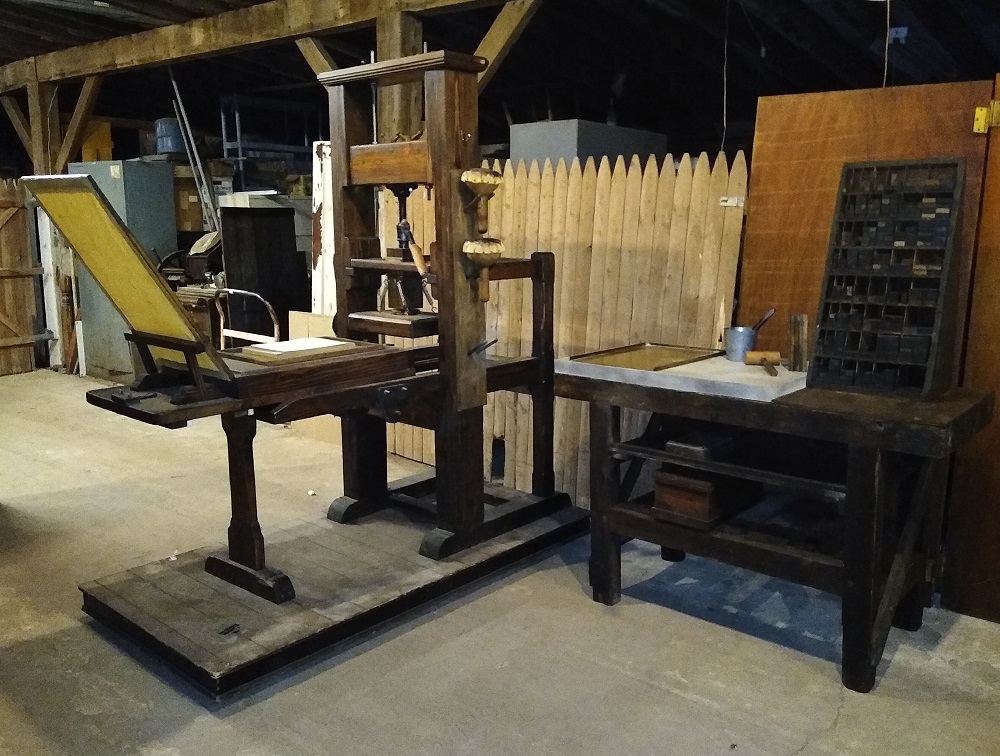 The Wooden
Common Press The Wooden
Common Press
Wooden Common Press:
30x60x80" *
Press Platform:
39x75x4"
Estimated
weight: 500
pounds
*
84" when mounted on its
platform as shown
This press is mounted on a 6-wheel
mobile platform and moves easily across
a smooth surface. We have supplied small
steel wheel chocks that can be used to
immobilize the press and platform once
it is in position.
On one side of the press are three sets
of pegs. The ink balls and ink brayer
can be placed in these pegs - or on the
stone table.
One of the shop aprons is intended to
hang from the small iron hook on the
operator's side.
The press can sit open or closed. It
travels in the closed "impression"
position, but can be cranked out to the
end of the bed using the "Rounce" (round
handle on the operator's side.) When the
tympan is clear of the platen, it can be
raised and laid against the "stay" (aka
back stop)
Except for the steel screw, this press
is all wood, fitted using mortise &
tenon and wooden pegs.
Since it is made of west-coast fir
instead of oak and elm or mahogany, and
lacks the 200# stone bed, it is
relatively light - perhaps 500-600
pounds by estimate. It moves quite
easily on its platform. The same press
made of hard woods and containing a 200
pound stone bed, would weigh closer to
800-1000 pounds.
|
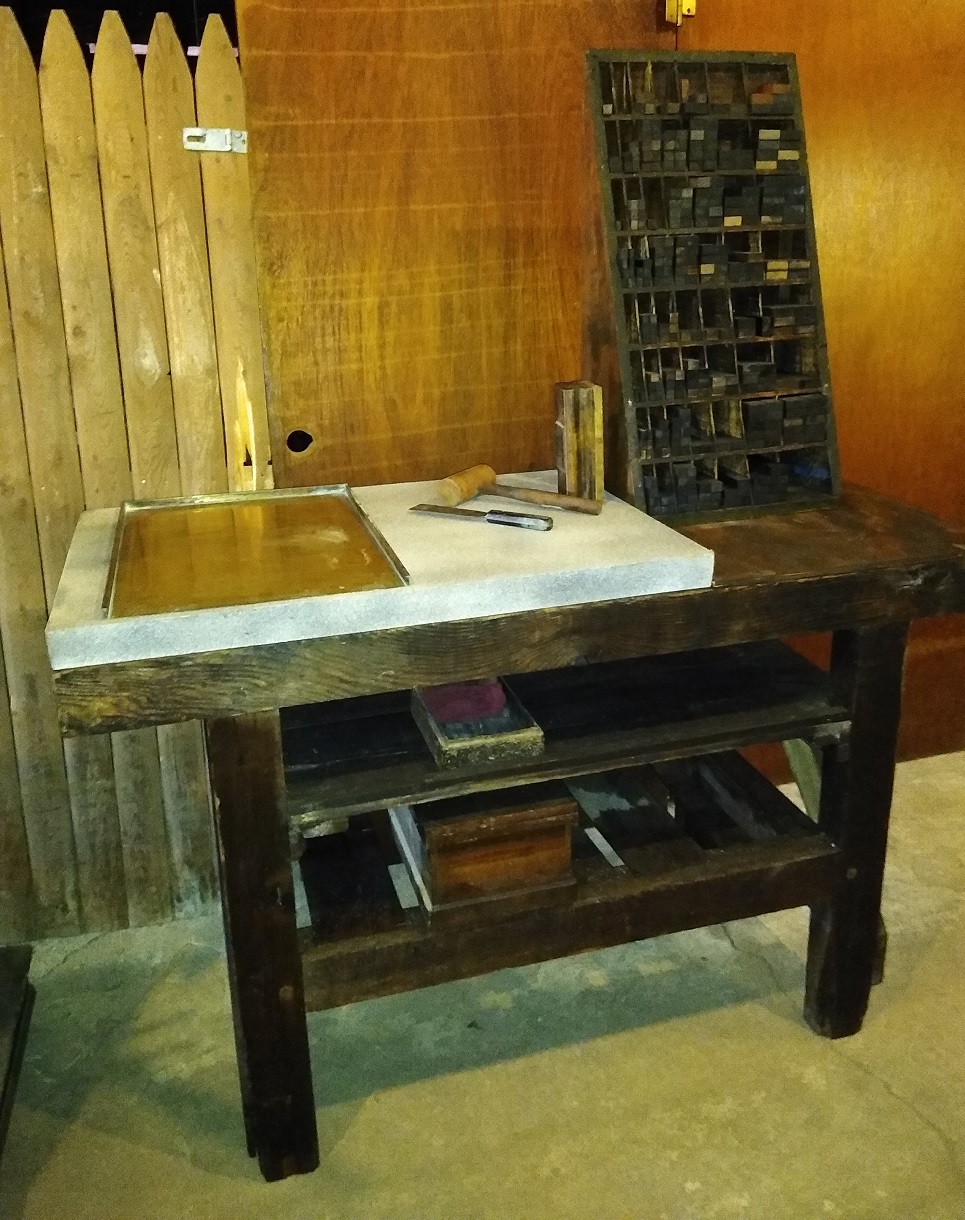 Stone
Table Stone
Table
Stone
Table 27x63" - 100
pounds
MDF
Faux
"Stone" 24x36" - 30 pounds
Furniture
Cabinet 9x12x28h"
(approx.) 25-30 pounds
This table is known as "The Stone"
due to the heavy 2"x24"x36" smooth
granite slab that normally sits on top
of it.  In
this case, the stone is a faux-stone,
made of laminated mdf and weighs far
less than a true stone. The table frame
is open. The stone sits on the left
side. A small platform is fitted to the
right side. The furniture cabinet sits
on top. It is filled with 200+ precisely
cut pieces of spacing that will likely
fall out it it is moved after being
unwrapped. In
this case, the stone is a faux-stone,
made of laminated mdf and weighs far
less than a true stone. The table frame
is open. The stone sits on the left
side. A small platform is fitted to the
right side. The furniture cabinet sits
on top. It is filled with 200+ precisely
cut pieces of spacing that will likely
fall out it it is moved after being
unwrapped.
 The Stone can
also be used as an Ink Table,
since once the form is made up and in
the press, it is no longer needed until
the printing job is done. Meanwhile, it
serves as an excellent smooth surface
for mixing ink and maintaining a supply
for inking the form. The Stone can
also be used as an Ink Table,
since once the form is made up and in
the press, it is no longer needed until
the printing job is done. Meanwhile, it
serves as an excellent smooth surface
for mixing ink and maintaining a supply
for inking the form.
|
The Proof
Press
C&P Galley Proof Press
24x35" 300 lbs (est.)
The Galley Proof Press consists
of two pieces; the base and the
impression roller. The roller weighs
30-40 pounds and must be placed on a
narrow ledge between the rails of the
bed. Best way to do this is to roll it
on from one end. Removal is
the same; roll it to the end, then
roll it off as you hold the handles
and take the weight.
It is
best to move the two pieces
separately.
The ink brayer can rest on the proof
press.
|
 |
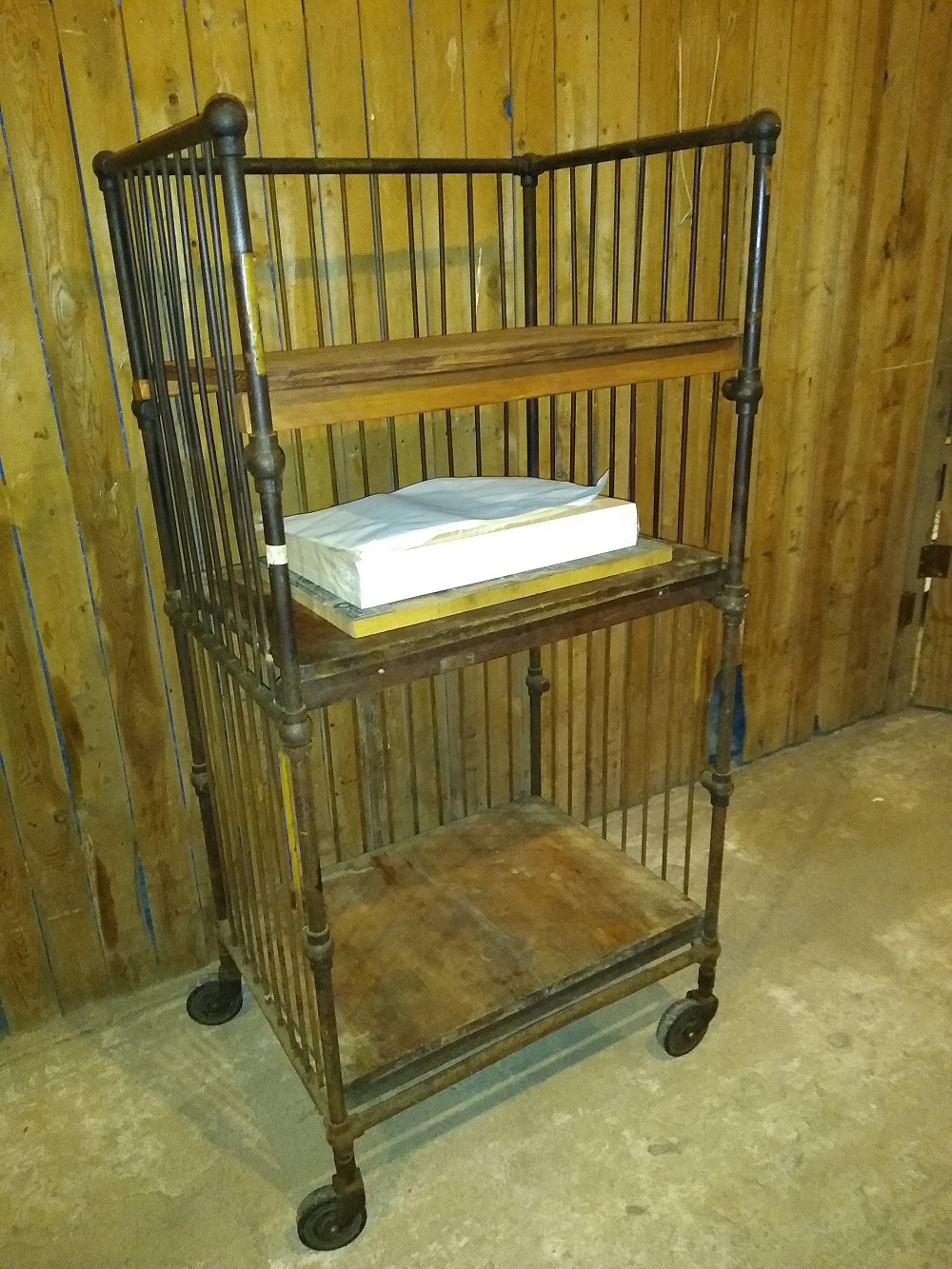 Bindery Cart Bindery Cart
Bindery Cart
21x27" 50
pounds (est)
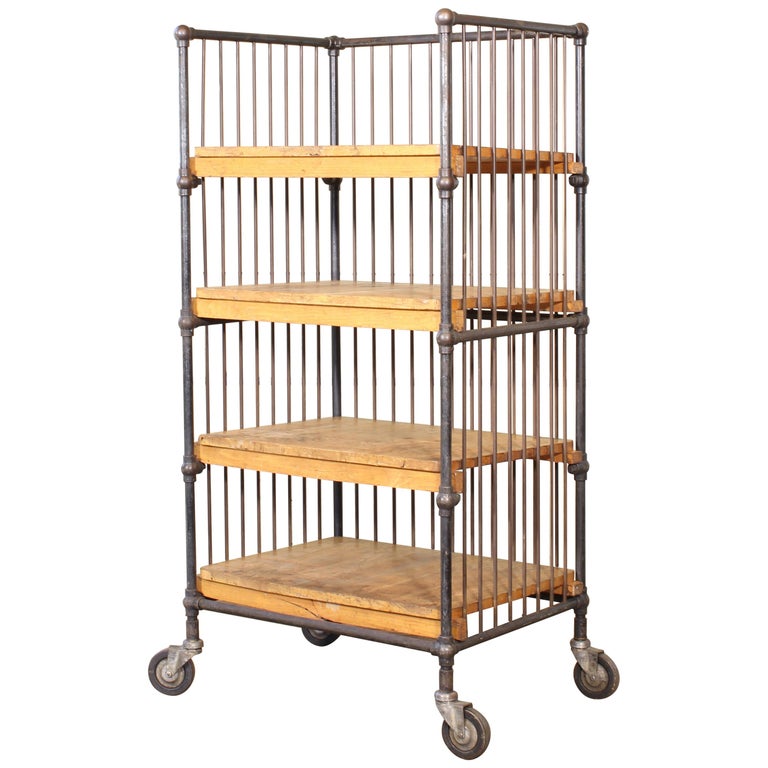 The Bindery
Cart would be used to move
paper around the shop. The shelves are
sloped slightly to the rear to prevent
tall stacks of paper from falling over
while the cart is being moved from the
press room to the bindery. The Bindery
Cart would be used to move
paper around the shop. The shelves are
sloped slightly to the rear to prevent
tall stacks of paper from falling over
while the cart is being moved from the
press room to the bindery. 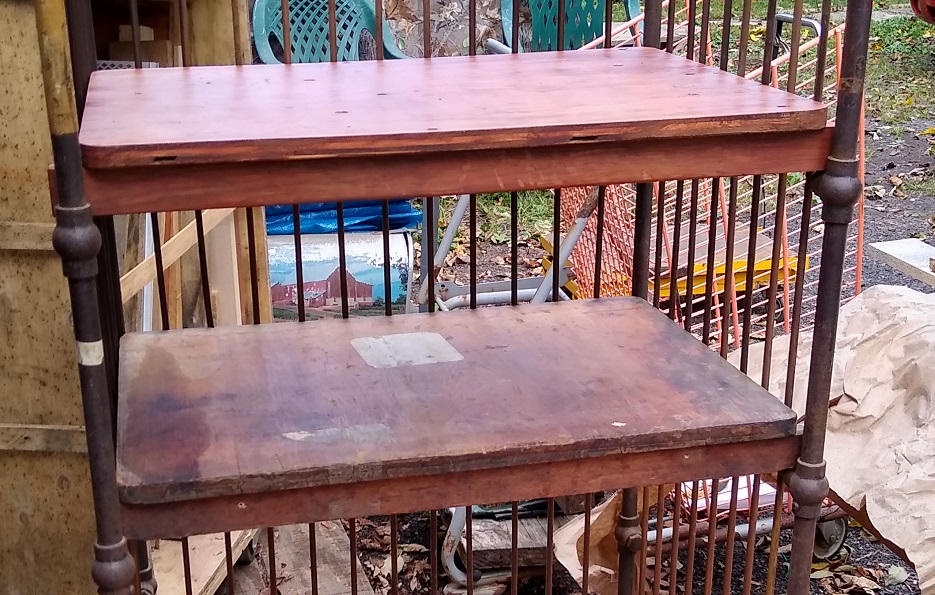
It can also be used to bring blank
sheets to the press for printing. We
made a proper, historically accurate new
shelf for this old cart.
|
Type Case
Stand (aka Type Cabinet)
Type
Cabinet
28x36" - 25
pounds
15 type cases - stacked
25x32x20" high - 150 pounds
The Type Case Stand (aka type
rack or type cabinet) holds
ten - fifteen drawers of hand-set
foundry type - letters - lots and lots
of letters. The Typesetter picks letters
out of the cases and assembles them into
rows and columns of type for printing.
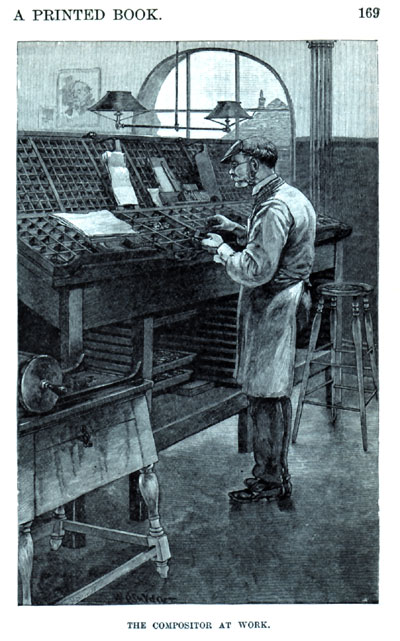 When
filled with cases, the one case that
contains letters goes on top. The others
are empty and slide into the rails
below. When
filled with cases, the one case that
contains letters goes on top. The others
are empty and slide into the rails
below.
The composing stick sits on top - in the
spacing case - as shown in the photo.
The proof press can be placed right next
to the type cabinet. The compositor
would set the type, print a proof on
this press, then move to his left to
lock up the form on the stone and then
place the corrected form in the big
press.
|
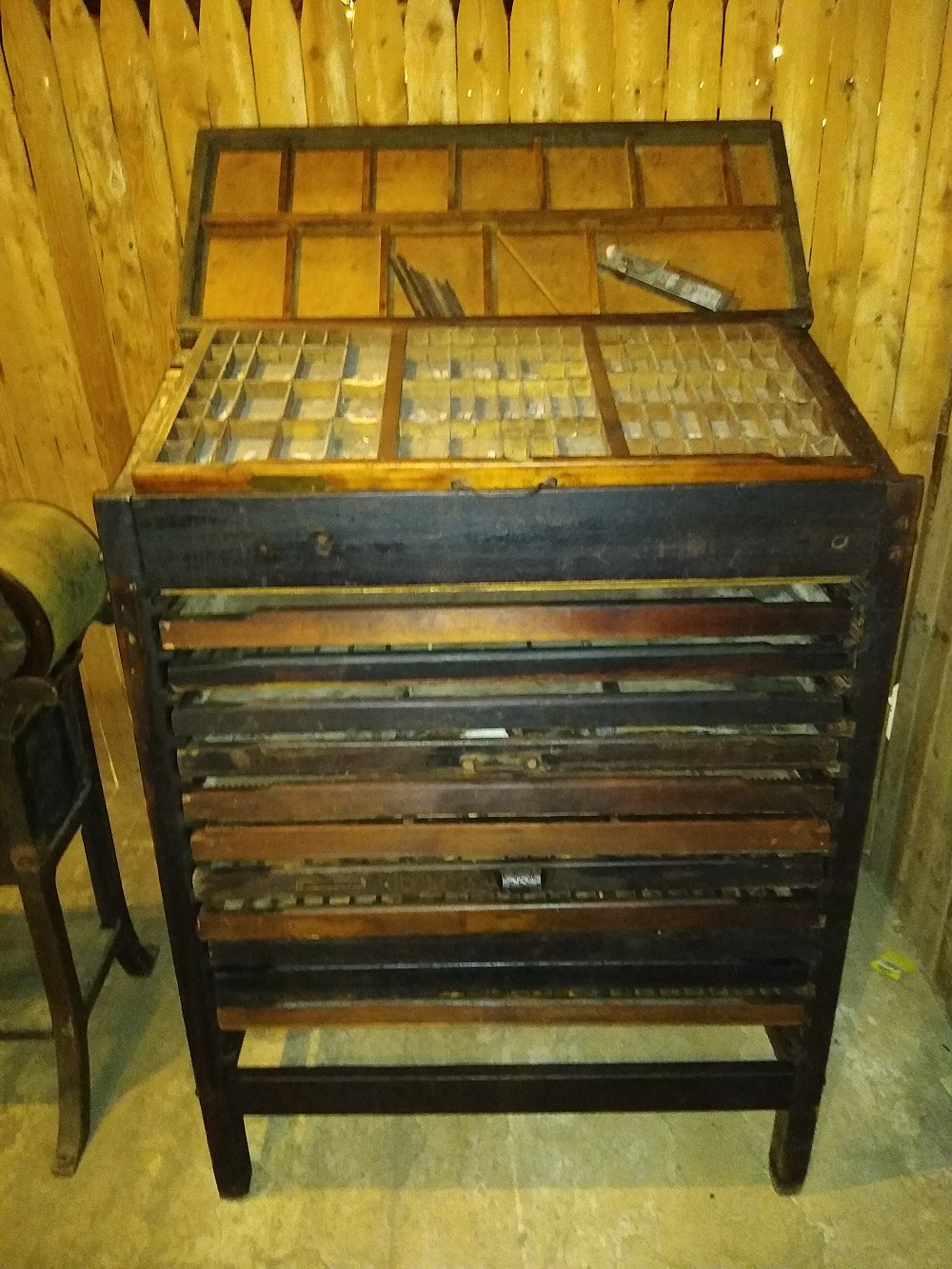
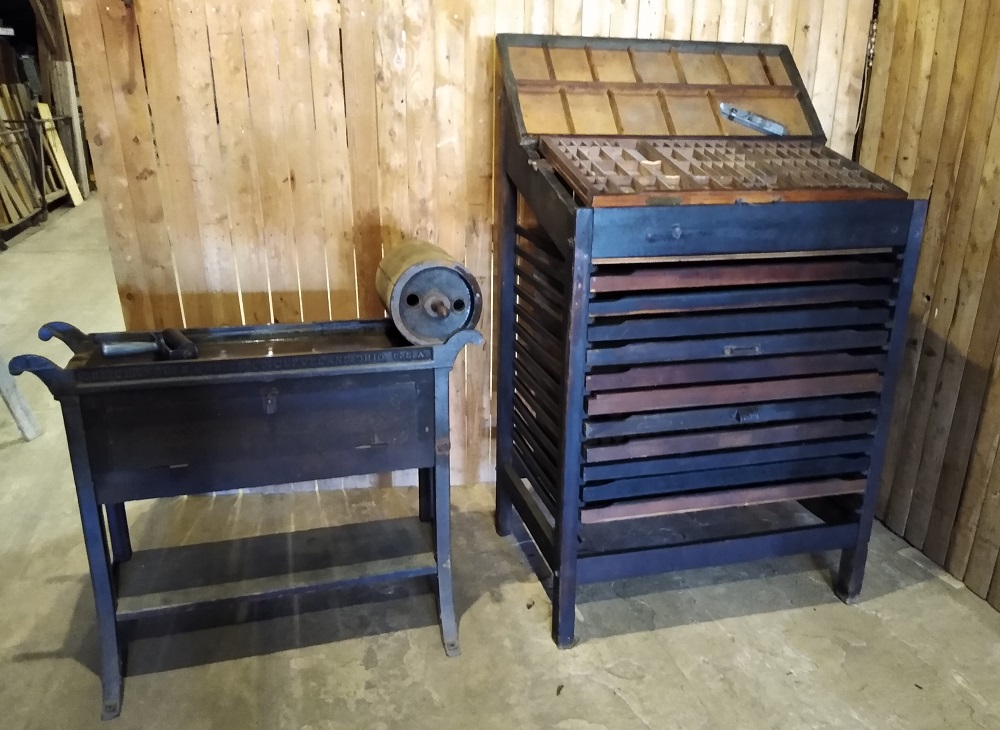
|
Suggested
Layout for Historically Accurate
Representation of a small printing
office circa 1859
In this layout, the TYPESETTER
would move only left and right -
from the type cabinet to the proof
press, then on to the stone to lock up
the form, then back to his type cases
without interfering with the printers.
The
INKER would stand where he is
and move to the left to get ink, then
apply it to the form from where he is.
The PRESSMAN
would stand where he is, crank the bed
in and out and pull the lever, then
crank the bed out and open the frisket -
all without moving much at all. The FEEDER would
take blank sheets from the Bindery Cart
(or a table), and insert them into the
tympan. The pressman would close the
frisket, crank the bed under the platen
and continue... One printer could do
50-100 pieces per hour. With three
printers, output could be more than
doubled.
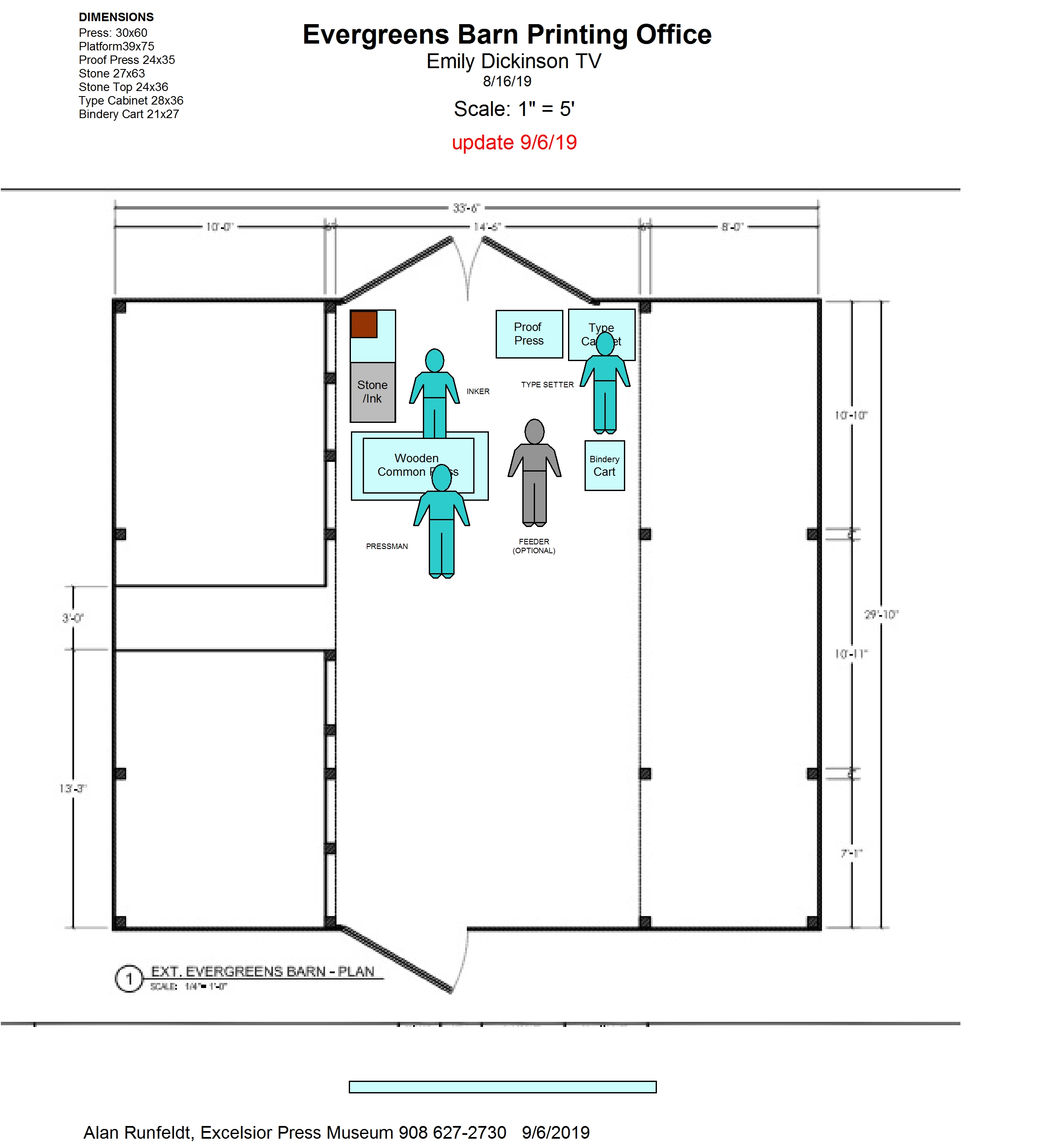
|
Complete List
of Items:
- 1 Full Scale, Wooden
Common Press (similar to one
that would have been made by
Adam Ramage in 1840) - with
chase
- 1 Stone Makeup Table
with with 24x36x2"
faux-granite stone surface
- 1 Furniture Cabinet (shelves)
with wood spacing material
- 1 Galley
Proof Press on Stand ("made by" Hoe
circa 1840)
- 1 Bindery Cart
- 1 Type Cabinet
- 1 type case with
type
- 11
type cases - empty
- 1 Old-style
Composing Stick
- miscellaneous
"stack" of wood-mounted metal
engravings
- 1 large ink brayer
(ink roller)
- 1 container of black
ink (Van Son Rubber Base 10850 -
old style can; no label)
- 1 ink knife
- 5 sheets press
tympan paper
- 5 sheets soft
packing
- 50 sheets 17x22 bond
- 50 sheets 11x17 70#
offset
- 2 printers' shop
aprons
- selection of wooden
quoins & wooden shooting
stick
- 1 wood mallet
- 1 leveling planing
block
- Hemp Cord for paper
drying line.
- ...tbd...
|
|
|
~~~~~~~~~~~~~~~~~~~~~~~~~~~~~~~~~~~~~~~~~~~~
page
last updated November, 2019
|












